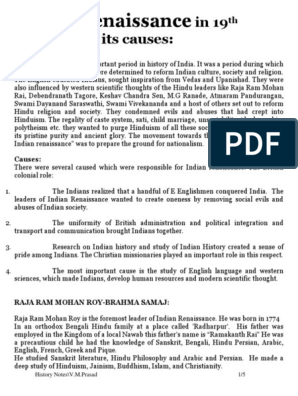0% found this document useful (0 votes)
696 views13 pages1266d Socio Religious Reform Movement
The document summarizes key socio-religious reform movements in modern Indian history. It outlines factors that led to the reform movements, including the impact of British rule and new social conditions. It then discusses the nature of the movements, highlighting their leadership by emerging intellectuals and emphasis on rationalism and religious universalism. The document provides a timeline of major reform movements from the early 19th century onward. It also includes timelines of legislative measures for women's rights and lists some prominent reformers and the organizations/movements associated with them.
Uploaded by
imdad ullahCopyright
© © All Rights Reserved
We take content rights seriously. If you suspect this is your content, claim it here.
Available Formats
Download as PDF, TXT or read online on Scribd
0% found this document useful (0 votes)
696 views13 pages1266d Socio Religious Reform Movement
The document summarizes key socio-religious reform movements in modern Indian history. It outlines factors that led to the reform movements, including the impact of British rule and new social conditions. It then discusses the nature of the movements, highlighting their leadership by emerging intellectuals and emphasis on rationalism and religious universalism. The document provides a timeline of major reform movements from the early 19th century onward. It also includes timelines of legislative measures for women's rights and lists some prominent reformers and the organizations/movements associated with them.
Uploaded by
imdad ullahCopyright
© © All Rights Reserved
We take content rights seriously. If you suspect this is your content, claim it here.
Available Formats
Download as PDF, TXT or read online on Scribd
/ 13









































































































